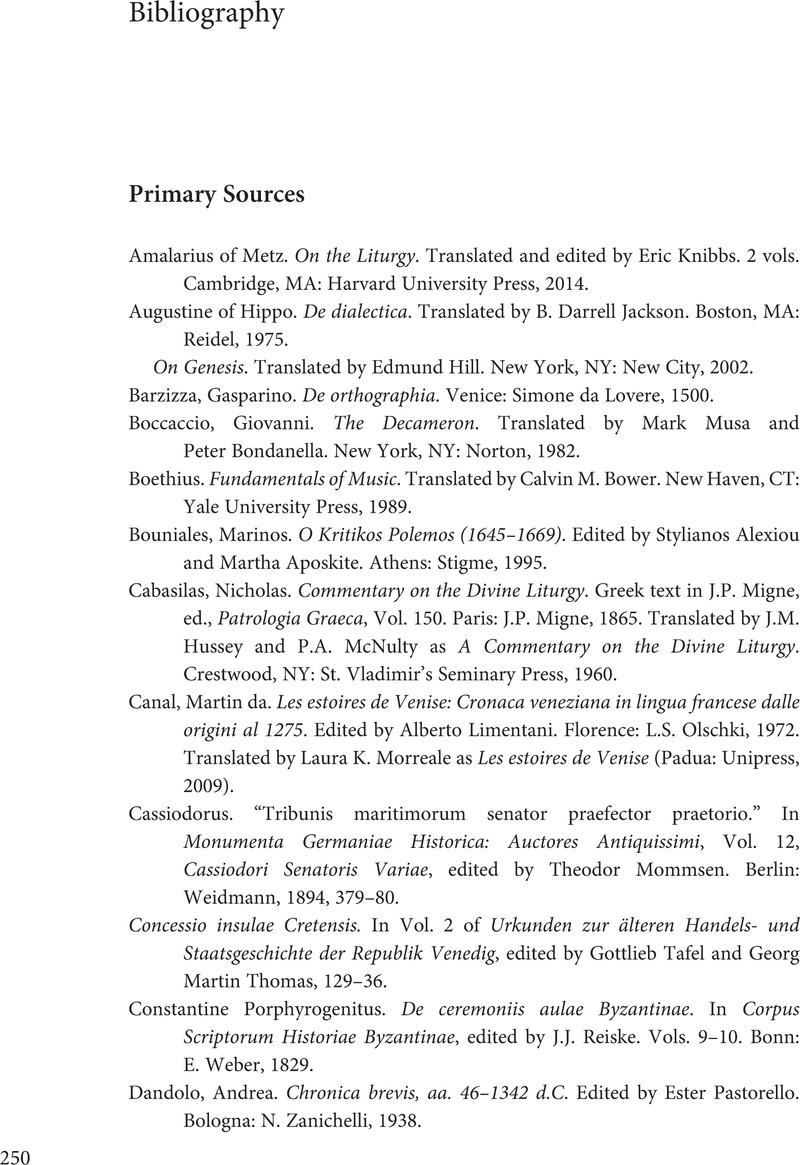Book contents
- Music and the Making of Medieval Venice
- Music in Context
- Music and the Making of Medieval Venice
- Copyright page
- Dedication
- Contents
- Figures
- Maps
- Tables
- Music Examples
- Acknowledgments
- Manuscript Sigla
- A Note on Dating
- Abbreviations
- Introduction
- Part I An Audible Empire
- Part II The Fictive City
- Part III Relics and the Horizons of Musical Representation
- Book part
- Bibliography
- Index
- References
Bibliography
Published online by Cambridge University Press: 12 October 2023
- Music and the Making of Medieval Venice
- Music in Context
- Music and the Making of Medieval Venice
- Copyright page
- Dedication
- Contents
- Figures
- Maps
- Tables
- Music Examples
- Acknowledgments
- Manuscript Sigla
- A Note on Dating
- Abbreviations
- Introduction
- Part I An Audible Empire
- Part II The Fictive City
- Part III Relics and the Horizons of Musical Representation
- Book part
- Bibliography
- Index
- References
Summary

- Type
- Chapter
- Information
- Music and the Making of Medieval Venice , pp. 250 - 268Publisher: Cambridge University PressPrint publication year: 2023

